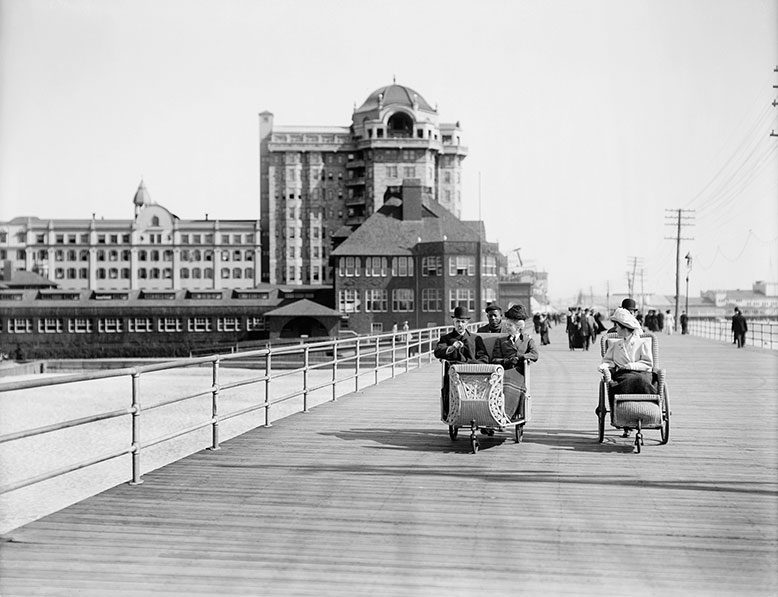
Like many natives of the Garden State, Dominick Mazzagetti is endlessly fascinated by the Jersey Shore. His new book, The Jersey Shore: The Past, Present & Future of a National Treasure (Rutgers University Press), traces the region’s development from colonial times through the aftermath of Superstorm Sandy.
“The story of the Jersey Shore is a story of change, constant change, right up through today,” writes Mazzagetti, 69, of Whitehouse Station.
Those changes are evident in numerous ways. Mazzagetti is particularly fascinated by how visitors have gotten to the Shore. “The impact of improvements in transportation on the development of the Jersey Shore is one of the themes I was trying to convey,” says Mazzagetti. “First wagons, then steamboats, then trains and cars. They all had a positive impact.”
He describes the earliest conveyances—known as Jersey wagons or oyster wagons—as “aromatic” and uncomfortable. “The ride was anything but pleasant,” says Mazzagetti. “Few wagons had cushioning springs, and the roads were poor.” Railroads made travel easier, enabling a series of 19th-century presidents to visit the Shore. Ulysses S. Grant popularized Long Branch with his frequent visits during and after his presidency, entertaining members of his cabinet and Civil War heroes Phil Sheridan and David Farragut.
Mazzagetti also details the social changes at the Shore. “At some resorts, like Cape Island (a forerunner of Cape May) in the 1830s, men and women could not be in the water or even on the beach at the same time,” he writes.
While Mazzagetti is optimistic about the Shore, he sees areas that need attention. “The key issues in the future are development, environmentalism—global warming, rising sea levels—equal access, and funding for erosion control, dunes and beach replenishment.”
At the Shore, it seems, change is the only constant.

Trying to reach Tom Wilk regarding re-printing of an article.